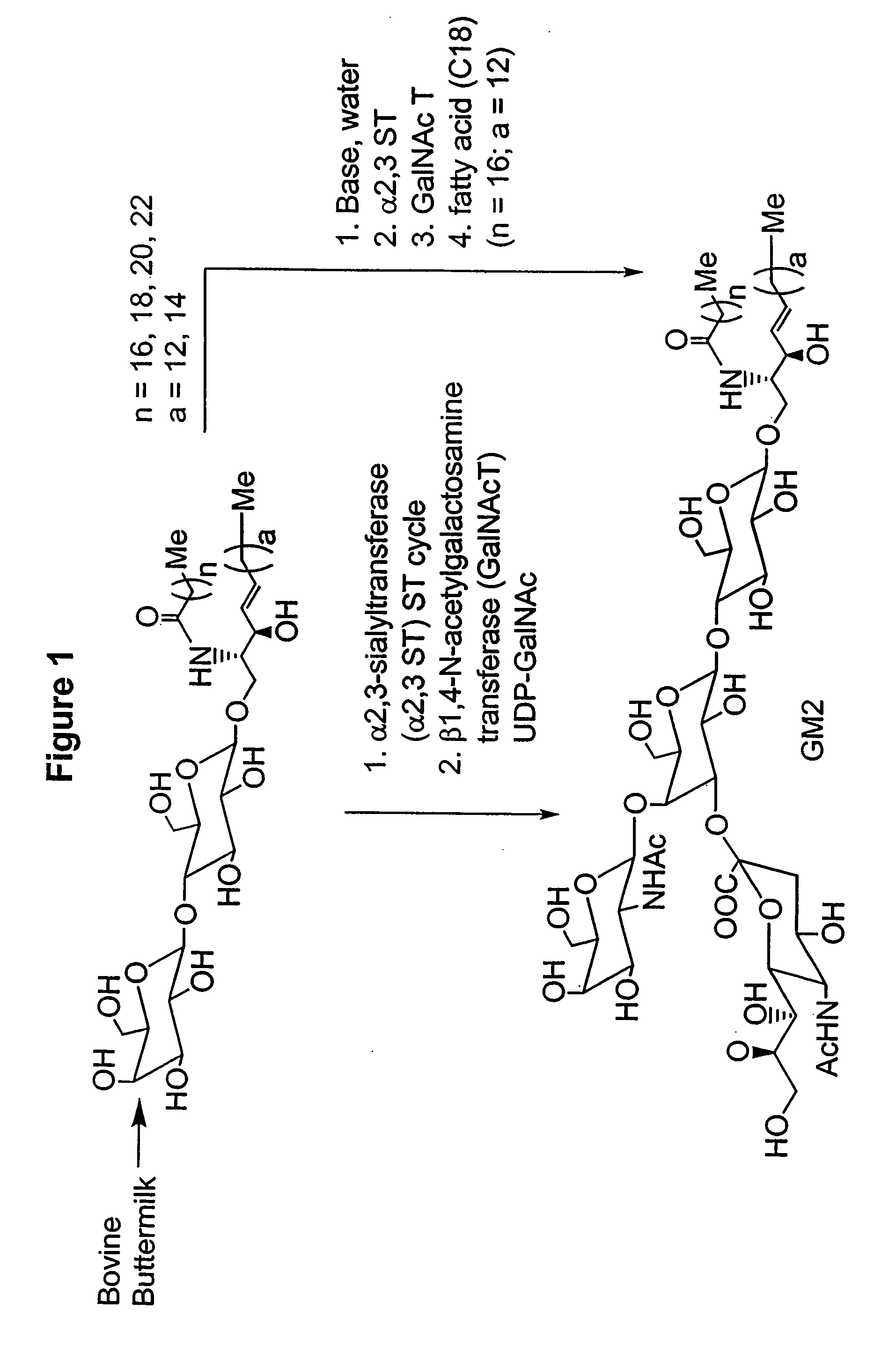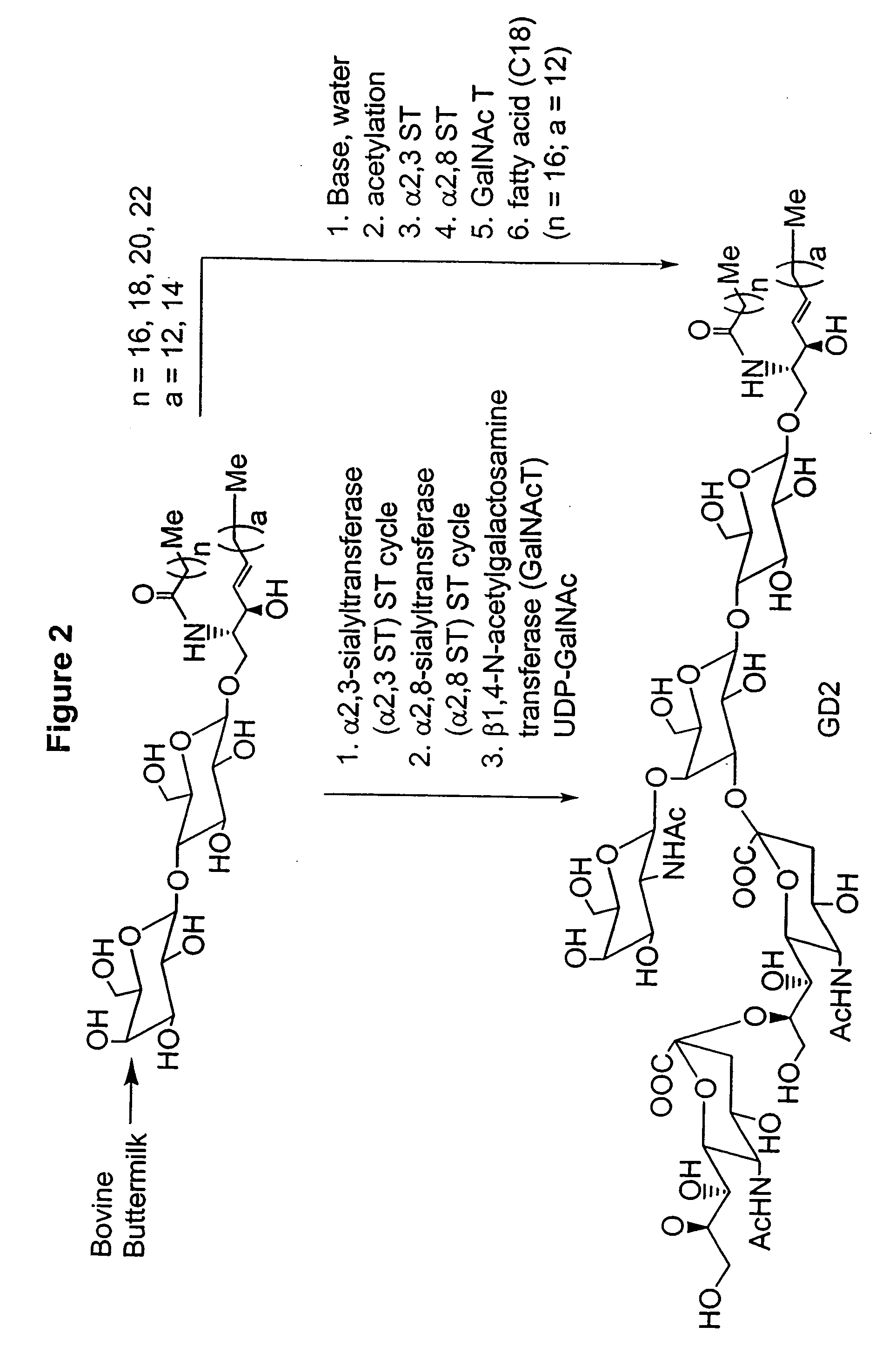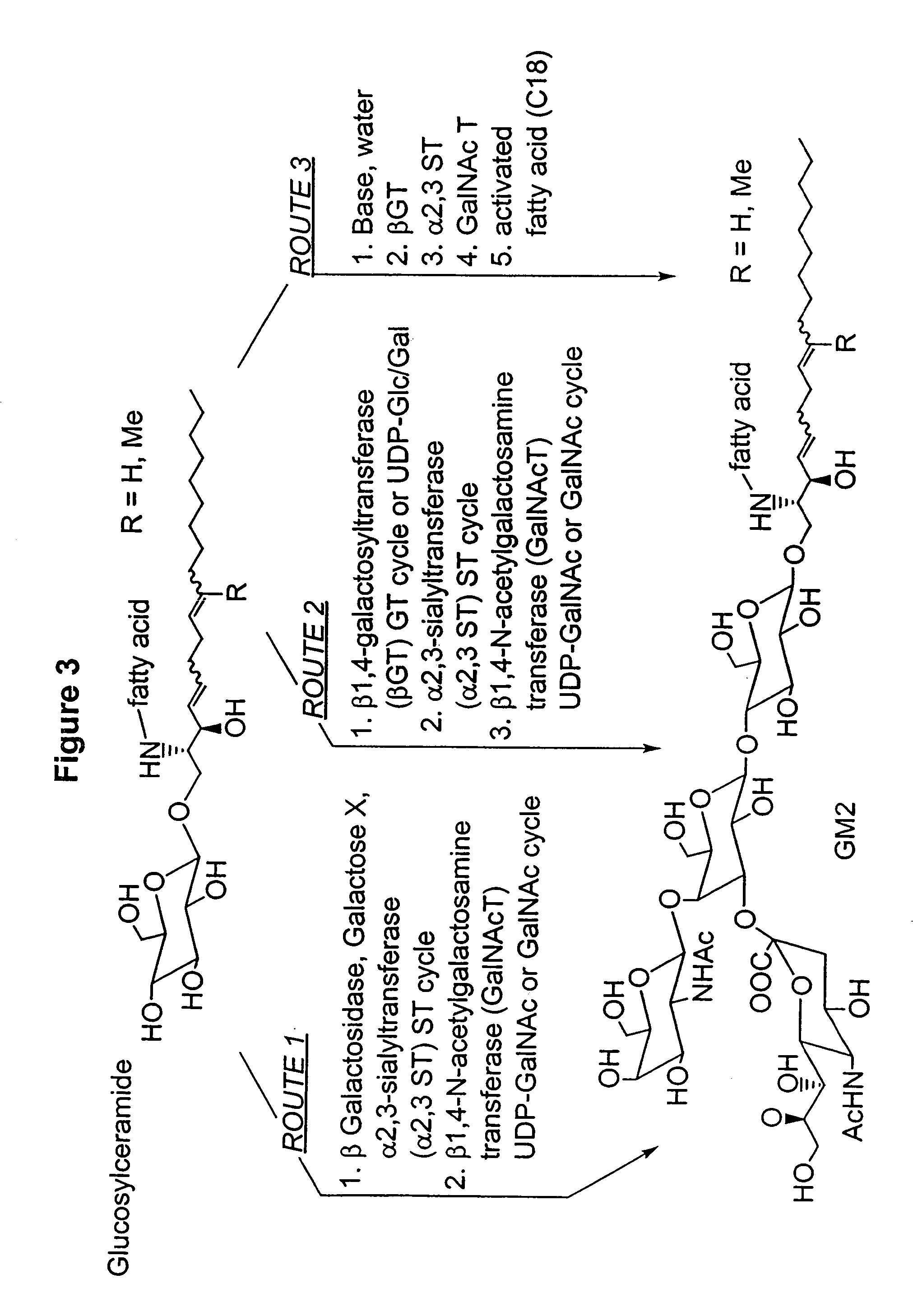Ganglioside compositions and methods of use
a technology of gangliosides and compositions, applied in the field of glycosphingolipids, can solve the problems of insufficient treatment methods, impure preparations, and general intravenous administration of gangliosides, and achieve the effect of prevention or treatmen
- Summary
- Abstract
- Description
- Claims
- Application Information
AI Technical Summary
Benefits of technology
Problems solved by technology
Method used
Image
Examples
example 1
General Procedure for Preparing the GM1 Aldehyde
[0267]GM1(2.5 g, 1.62 mmol) was dissolved in 2500 mL of methanol. This solution was cooled to −70° C. and ozone bubbled through the solution until the light blue color did not disappear (about 30 mins). The ozone was removed by bubbling nitrogen through the reaction mixture until the solution became colorless. Then, 80 mL of dimethylsulfide was added and the resulting mixture was stirred at room temperature for 2 h. The solvent was evaporated with nitrogen to dryness. The residue was co-evaporated with toluene (50 mL) and the residue dried on a high vacuum pump for 1 h to yield a white solid containing the aldehyde.
example 2
Wittig Reaction Preparation of:
[0268]
[0269]A suspension containing 3-chloro-2-fluoro-5-(trifluoromethyl)benzyl-triphenylphosphonium bromide (2.58 g, 4.66 mmol), dimethylformamide (DMF) (50 mL) was cooled to −40° C. and 1M potasium tert-butyloxide in tert-butylalcohol solution (4.49 mL) was then added. After 10 minutes, this reaction mixture was added slowly to a solution of aldehyde dissolved in DMF (200 mL) and cooled to −40° C. After addition was complete, the reaction mixture was stirred at room temperature for 1 h. The reaction mixture was then concentrated on a rotovap and the residue chromatographed (silica, CHCl3 / MeOH 3:1 then, MeOH / H2O / NH4OH 60:40:7:1) to afford 1.5 g (60% yield) of the desired product as a ˜70 / 30 cis / trans mixture. ESI-MS; calcd for C67H106ClF4N3O31, 1559; found 1558 [M−1]−. 1H-NMR (500 MHz, 95% DMSO-d6+5% D2O) δ7.98 (d, J 6.0 Hz, 2H), 7.84 (d, J 6.0 Hz, 1H), 7.82 (d, J 5.5 Hz, 2H), 7.60 (d, J 5.5 Hz, 1H), 7.34 (d, J 9.5 Hz, 2H), 6.64 (d, J 16 Hz, 1H), 6.48...
example 3
Wittig Reaction Preparation of:
[0270]
[0271]The Wittig procedure of Example 2 was followed except that the starting ylide was changed. The desired product was obtained as a white solid, (43% yield). ESI-MS; calcd for C65H105N4O31, 1440; found 1439 [M−1]−. 1H-NMR (500 MHz, 95% DMSO-d6+5% D2O) δ8.46 (d, J 4 Hz, 1H), 7.70 (dd, J 6.5 and 9.6 Hz, 1H), 7.37 (d, J 8.0 Hz, 1H), 7.18 (dd, J 5.0 and 5.0 Hz, 1H), 6.64 (dd, J 15.5 and 6.0 Hz, 1H), 6.57 (d, J 15.5 Hz, 1H), 4.82 (d, J 8.5 Hz, 1H), 4.27 (d, J 8.0 Hz, 1H), 4.18-4.22 (2d, 2H), 3.10-3.93 (m), 2.02 (t, 2H), 1.86 (s, 3H, COCH3), 1.75 (s, 3H, COCH3), 1.36 (m, 2H), 1.22 (s), 1.06 (m, 2H, CH2), 0.83 (t, 3H, CH3).
PUM
| Property | Measurement | Unit |
|---|---|---|
| temperature | aaaaa | aaaaa |
| temperature | aaaaa | aaaaa |
| temperature | aaaaa | aaaaa |
Abstract
Description
Claims
Application Information
 Login to View More
Login to View More - R&D
- Intellectual Property
- Life Sciences
- Materials
- Tech Scout
- Unparalleled Data Quality
- Higher Quality Content
- 60% Fewer Hallucinations
Browse by: Latest US Patents, China's latest patents, Technical Efficacy Thesaurus, Application Domain, Technology Topic, Popular Technical Reports.
© 2025 PatSnap. All rights reserved.Legal|Privacy policy|Modern Slavery Act Transparency Statement|Sitemap|About US| Contact US: help@patsnap.com



